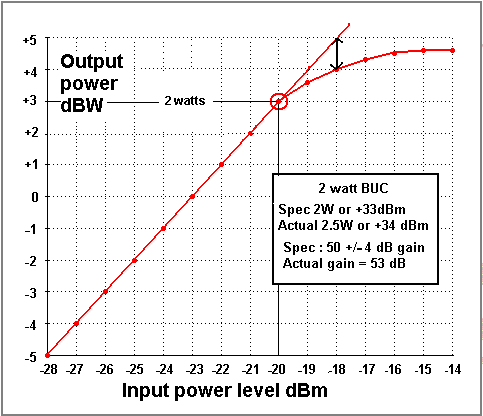Advertisment:


Satellite Internet Forum.
Welcome, Guest. Forum rules.To search this site click here > SATSIG search
| Home Login Register |
| Satellite Internet forum › iDirect Forum: hubs and terminals › iDirect Rx Saturation Level |
|
Pages: 1
|
iDirect Rx Saturation Level(Read 14647 times) |
|
valdemiro
Member
★★ Offline Posts: 12 |
Aug 19th, 2009 at 7:50pm
|
| Back to top |
IP Logged
|
|
Ex Member
Ex Member
|
Reply #1 - Aug 19th, 2009 at 8:50pm
|
| Back to top |
« Last Edit: Aug 20th, 2009 at 12:48am by N/A »
IP Logged
|
|
Eric Johnston
Senior Member
★★★ Offline Posts: 2109 |
Reply #2 - Aug 19th, 2009 at 10:27pm
|
| Back to top |
IP Logged
|
|
valdemiro
Member
★★ Offline Posts: 12 |
Reply #3 - Aug 20th, 2009 at 5:21pm
|
| Back to top |
IP Logged
|
|
valdemiro
Member
★★ Offline Posts: 12 |
Reply #4 - Aug 20th, 2009 at 5:28pm
|
| Back to top |
« Last Edit: Aug 20th, 2009 at 8:06pm by Admin1 »
IP Logged
|
|
Eric Johnston
Senior Member
★★★ Offline Posts: 2109 |
Reply #5 - Aug 20th, 2009 at 8:04pm
|
| Back to top |
IP Logged
|
|
valdemiro
Member
★★ Offline Posts: 12 |
Reply #6 - Aug 21st, 2009 at 4:36pm
|
| Back to top |
IP Logged
|
|
Eric Johnston
Senior Member
★★★ Offline Posts: 2109 |
Reply #7 - Aug 21st, 2009 at 7:06pm
|
| Back to top |
IP Logged
|
|
valdemiro
Member
★★ Offline Posts: 12 |
Reply #8 - Sep 30th, 2009 at 10:05pm
|
| Back to top |
IP Logged
|
|
Eric Johnston
Senior Member
★★★ Offline Posts: 2109 |
Reply #9 - Sep 30th, 2009 at 11:40pm
|
| Back to top |
« Last Edit: Oct 1st, 2009 at 8:27am by Eric Johnston »
IP Logged
|
|
Adrian
Member
★★ Offline Posts: 17 |
Reply #10 - Oct 1st, 2009 at 11:09am
|
| Back to top |
IP Logged
|
|
Ex Member
Ex Member
|
Reply #11 - Oct 1st, 2009 at 11:56am
|
| Back to top |
IP Logged
|
|
Adrian
Member
★★ Offline Posts: 17 |
Reply #12 - Oct 1st, 2009 at 1:42pm
|
| Back to top |
IP Logged
|
|
Eric Johnston
Senior Member
★★★ Offline Posts: 2109 |
Reply #13 - Oct 1st, 2009 at 1:42pm
|
| Back to top |
IP Logged
|
|
Adrian
Member
★★ Offline Posts: 17 |
Reply #14 - Oct 1st, 2009 at 2:09pm
|
| Back to top |
IP Logged
|
|
Eric Johnston
Senior Member
★★★ Offline Posts: 2109 |
Reply #15 - Oct 1st, 2009 at 4:00pm
|
| Back to top |
IP Logged
|
|
Adrian
Member
★★ Offline Posts: 17 |
Reply #16 - Oct 2nd, 2009 at 7:38am
|
| Back to top |
IP Logged
|
|
Eric Johnston
Senior Member
★★★ Offline Posts: 2109 |
Reply #17 - Oct 2nd, 2009 at 8:18am
|
| Back to top |
IP Logged
|
|
Adrian
Member
★★ Offline Posts: 17 |
Reply #18 - Oct 2nd, 2009 at 8:43am
|
| Back to top |
IP Logged
|
|
valdemiro
Member
★★ Offline Posts: 12 |
Reply #19 - Oct 2nd, 2009 at 3:46pm
|
| Back to top |
IP Logged
|
|
Adrian
Member
★★ Offline Posts: 17 |
Reply #20 - Oct 5th, 2009 at 11:05am
|
| Back to top |
IP Logged
|
|
Pages: 1
|
Email me: eric@satsig.net
Powered by YaBB 2.5.2!
YaBB Forum Software © 2000-. All Rights Reserved.
Disclaimer, Terms of Use and Privacy Forum User Agreement Forum rules Cookie policy.


